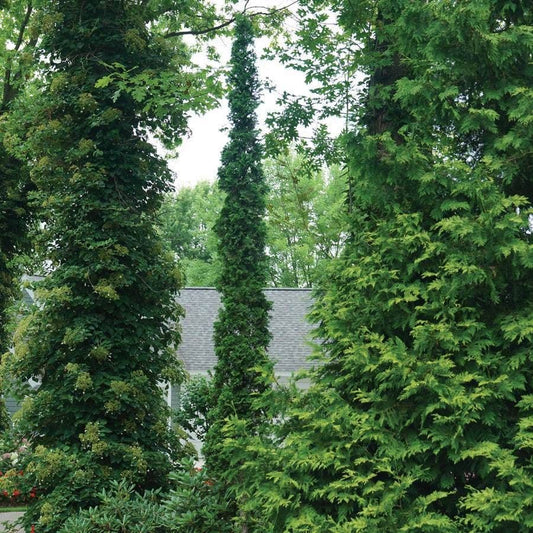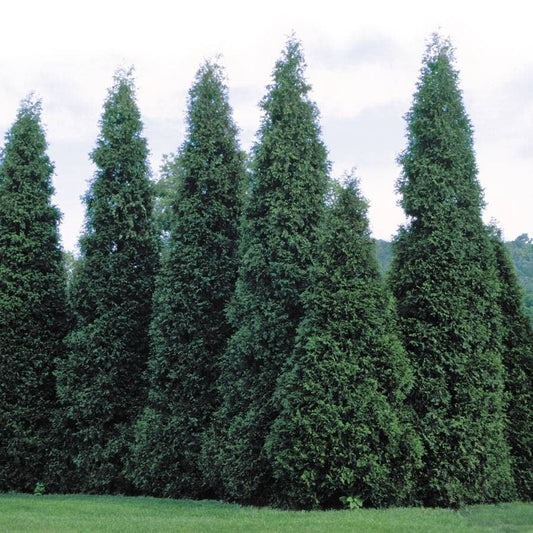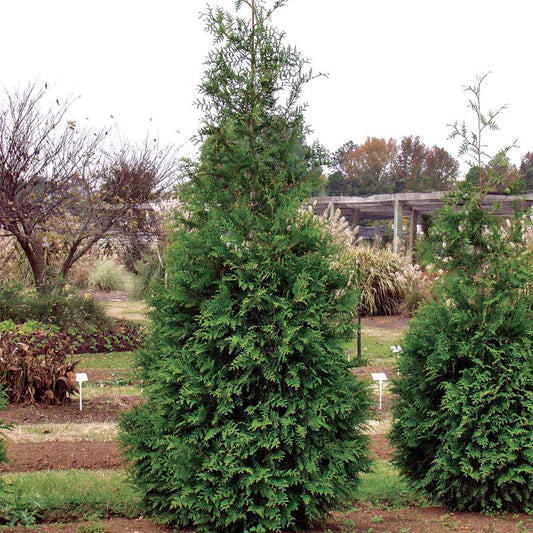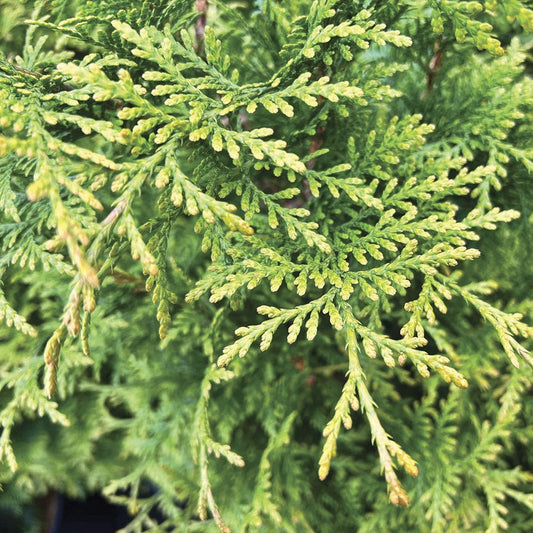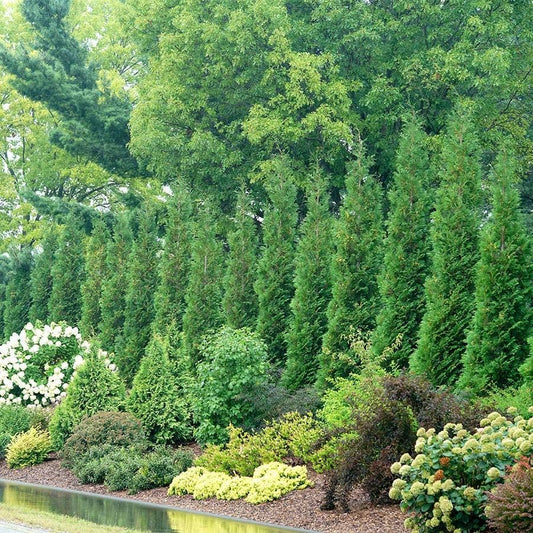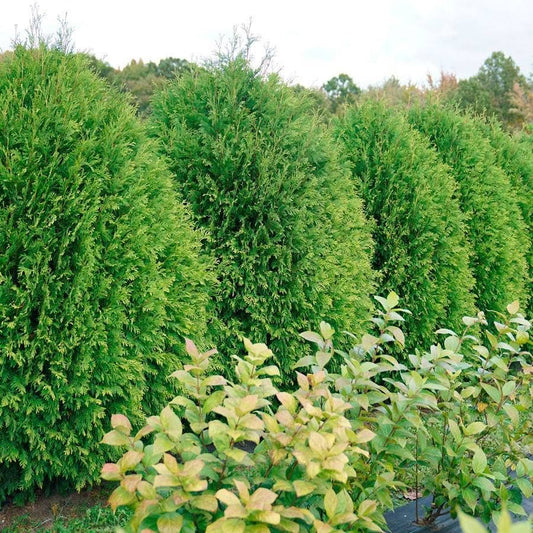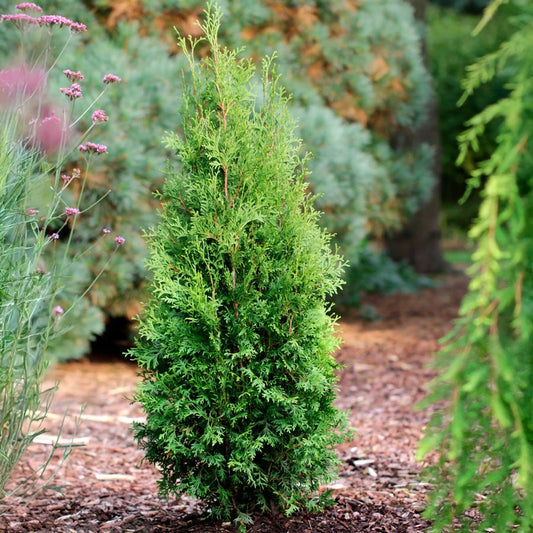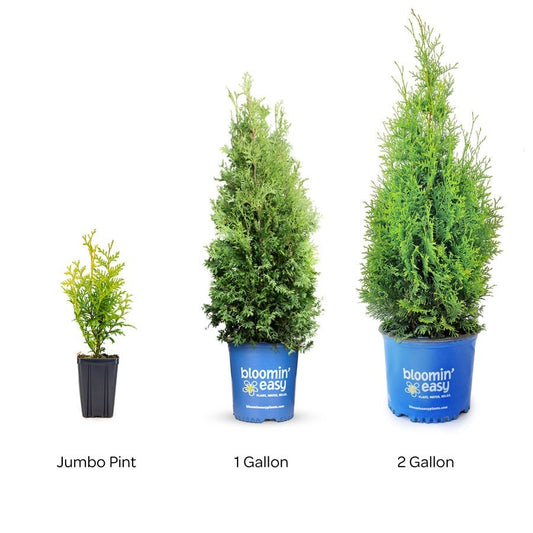Thuja Trees / Arborvitae
Evergreen Thuja trees are the guardians of your privacy and garden's beauty year-round. Learn about their diverse varieties, care for healthy growth, and discover their versatility in landscaping, from hedges to accents.
-
Thuja Sting™ Arborvitae
Regular price $30.95Regular priceUnit price per$30.95Sale price $30.95 -
Thuja 'Green Giant' Arborvitae
Regular price From $25.95Regular priceUnit price per$25.95Sale price From $25.95 -
Thuja Fluffy®
Regular price $26.95Regular priceUnit price per$26.95Sale price $26.95 -
Thuja 'Junior Giant' Arborvitae
Regular price $28.95Regular priceUnit price per$28.95Sale price $28.95 -
Thuja North Pole®
Regular price $24.95Regular priceUnit price per$24.95Sale price $24.95 -
Thuja Full Speed A Hedge®
Regular price $28.95Regular priceUnit price per$28.95Sale price $28.95 -
Thuja Cheer Drops™
Regular price $24.95Regular priceUnit price per$24.95Sale price $24.95 -
Thuja Private Jet™ Arborvitae
Regular price From $29.95Regular priceUnit price per$29.95Sale price From $29.95Sold out
Thuja Trees / Arborvitae
The Thuja genus contains coniferous evergreen trees, commonly called arborvitaes. Varying widely in color, shape, and size, these trees can be narrow or broad and can reach up to 200 feet in height; but most range between 10 and 60 feet tall and have a pyramidal shape and a dense branching structure with fibrous, stringy-textured, brown to reddish brown bark having a furrowed, fissured appearance. Foliage forms in flat sprays of scale-like leaves with a distinct evergreen fragrance. Pollen cones tend to be small and inconspicuous, and seed cones stay less than an inch long.
Arborvitaes grow easily and offer ornamental, utilitarian, and environmental benefits. They provide year-round color, texture, and architectural structure and are extensively grown as natural privacy screens or hedges. As large hedges, they not only create a cooling effect in summer by shading surrounding areas but also provide insulation in winter by reducing wind chill. These hedges also muffle noise; trap airborne particulate pollution, making the surrounding air cleaner; and provide shelter, nest sites, and a food source for wildlife and birds.
Thuja is a genus with 5 species, 2 of which are native to North America: T. occidentalis (American arborvitae, eastern arborvitae, eastern white cedar) and T. plicata (western arborvitae, western red cedar, giant arborvitae). Other species include T. koraiensis (Korean arborvitae), T. standishii (Japanese arborvitae), and T. sutchuenensis (Sichuan arborvitae). T. standishii x plicata is a hybrid arborvitae, and T. orientalis (Oriental arborvitae, Oriental thuja) was formerly treated as a Thuja species but is now in a genus of its own: Platycladus orientalis.
